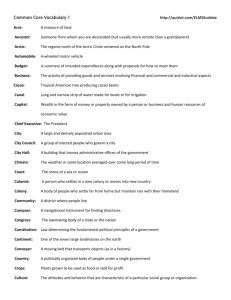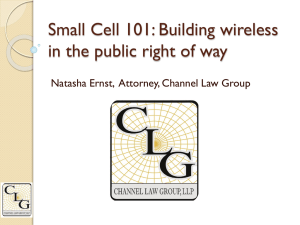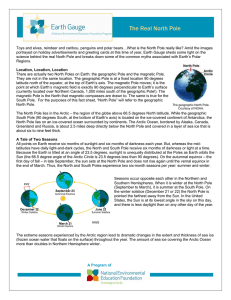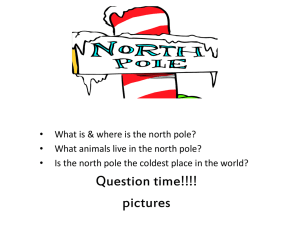Polar Seas ppt
advertisement
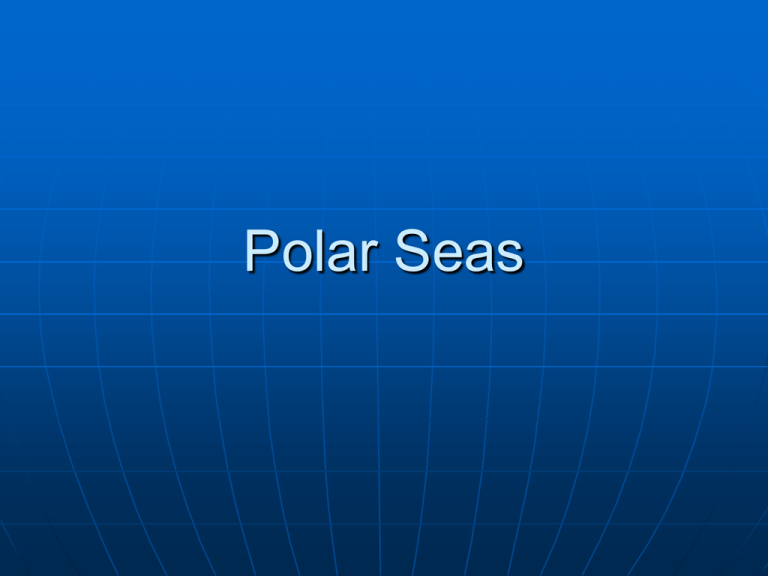
Polar Seas Test your knowledge… True or False?? Penguins make delicious polar bear food. FALSE: Penguins live South of the equator, polar bears live in the Arctic. Most of the world’s fresh water is frozen in Antarctica’s ice. TRUE Antarctica is the highest, driest, windiest, coldest, cleanest place on earth. TRUE The Arctic is frozen land surrounded by water FALSE: The Arctic is frozen ocean surrounded by land. The only direction you can go from the South Pole is North. TRUE There are candy striped barber poles to mark both the North and South Poles. FALSE: Only at the South Pole at the Amundsen-Scott base. There are only 6 sunrises and 6 sunsets each year at the Poles. FALSE: The sun rises and sets only once a year. Polar Exploration 1909 – Robert Peary 1st to reach North Pole Dec. 1911 – Roald Amundsen, with 4 companions, is 1st to reach South Pole Jan. 1912 – Robert Scott, Edward Wilson, Birdie Bowers, Edgar Evans & Lawrence Oates reached South Pole; they did not survive the return journey 1929 – Richard Byrd 1st to fly over the South Pole 1920 – Amundsen dies in air ship rescue at North Pole 1955 – Admiral Byrd establishes 8 research stations at South Pole 1958 – Captain Anderson sails under Arctic Ocean – Alaska to Greenland Comparing Polar Seas North Pole Huge mass of ice over Arctic ocean Average temps: • Winter: -30oF • Summer: 32oF South Pole Average temps: • Winter: -78oF • Summer: 20oF Record: -92oF Land mass covered by ice – extends 100s of miles into ocean Record: -128oF Polar bears, pinnipeds, no penguins Penguins, pinnipeds (walruses) Arctic Antarctic Polar Conditions High winds Cold winters, cool summers Low precipitation Summer = 6 months of daylight Winter = 6 months darkness Water warmer than surrounding land Upwelling Ice may completely cover or float on sea • Provide resting spots for marine animals • Floes – polar bears • Ice bergs found at both poles High Productivity In summer months, phytoplankton (diatoms) can go through unending photosynthesis • 24 hours daylight • Upwelling provides nutrients With large amounts of phytoplankton • Zooplankton grow • Large animals migrate to feed Animal Adaptations BLUBBER • Insulation • Buoyancy • Food reserve Penguins • Male keeps eggs balanced on his feet to avoid freezing • Huddle en masse, rotate during storms Pinnipeds Group of marine mammals Paddle-shaped flippers Blubber Need to rest & breed on land Seals Largest group of pinnipeds Can’t rotate rear flippers forward Have short necks No external ears Sea Lions “Eared” seals Front flippers rotate to support body weight Rear flippers rotate forward to walk on land Walruses Pair of protruding tusks • Use to pull up on ice Whiskers used to sense environment Feed mainly on bottom invertebrates Antarctic Permafrost – soil that never thaws Great Freeze • March • Once temp hits -40oC, ocean freezes at a rate of 5.75 km/minute
